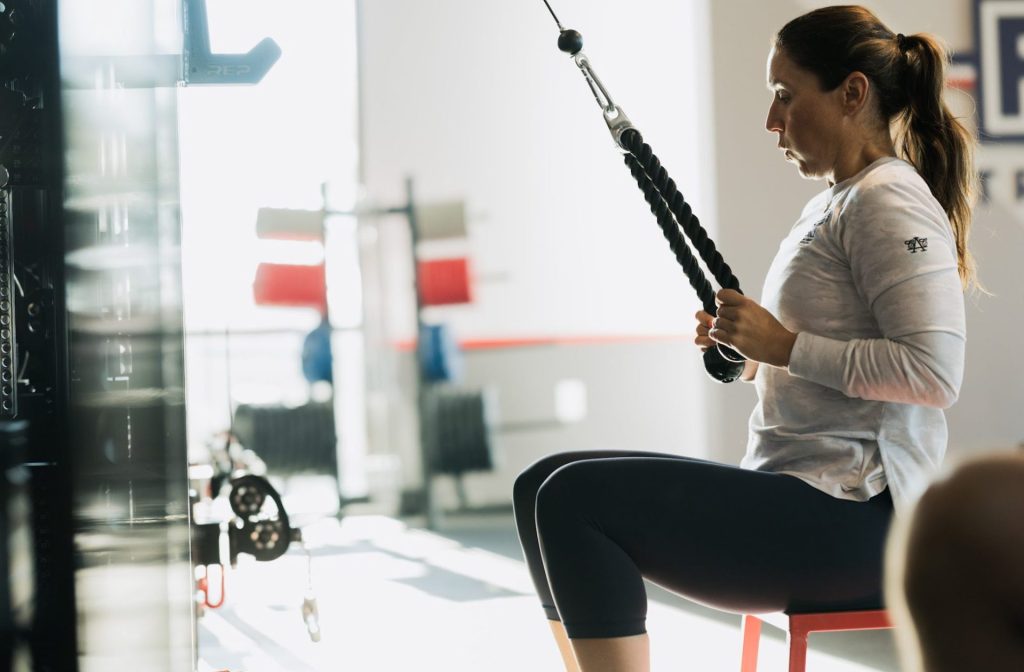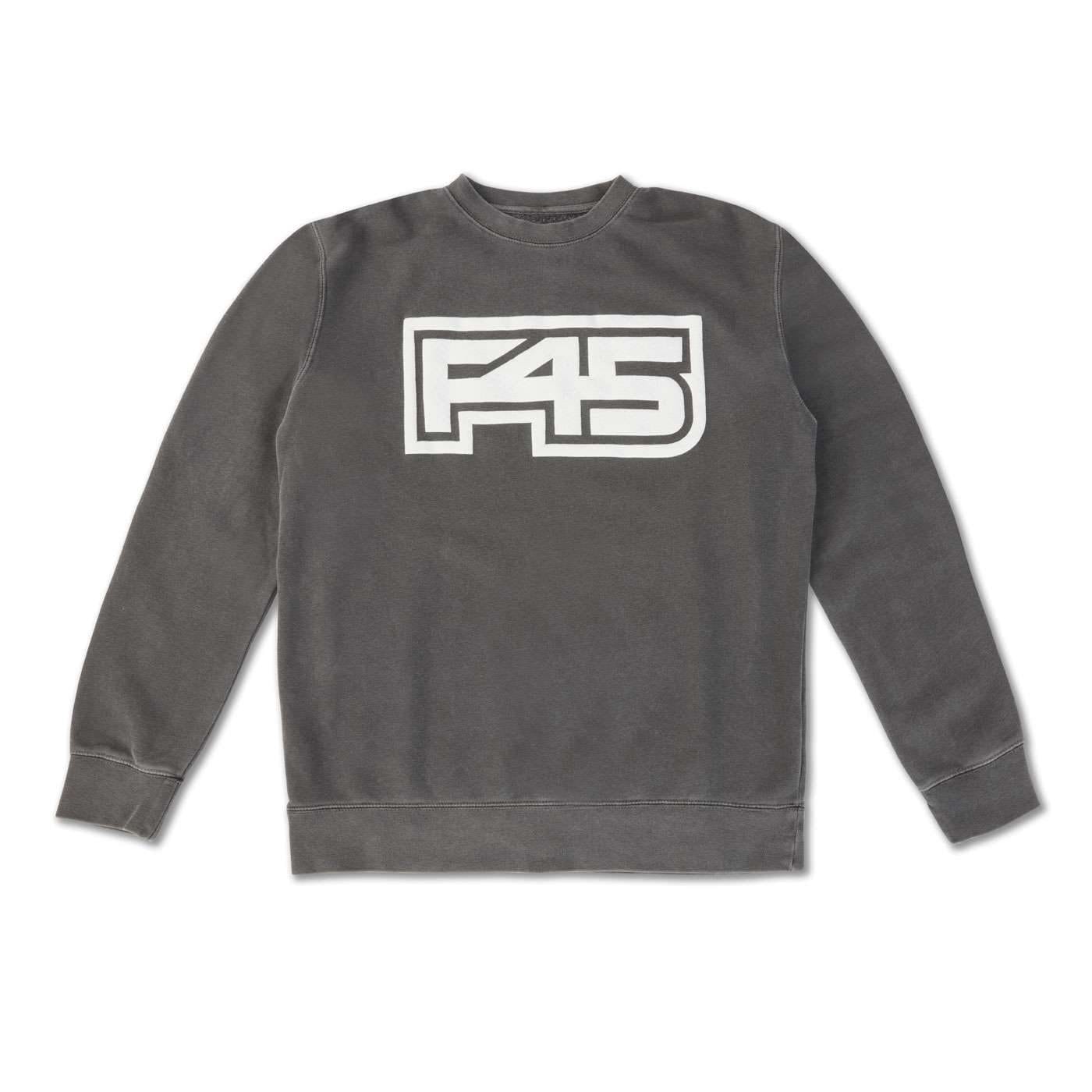If you’re experiencing shoulder pain, it’s likely that exercising is uncomfortable – and that the pain is limiting the range of motion on your affected side.
If this sounds like you, you’re not alone. Shoulder pain is a common joint problem, with 18 to 26% of adults experiencing it at some point in their life1. Shoulder problems can come from any part of life – often from accidents while working or exercising – and can get in the way of your workout goals and general wellness.
Although shoulder pain or injuries will initially need a few rest days to heal, once your movement begins to return it’s important to perform shoulder pain exercises that strengthen your muscles: supporting your joints, reducing pain, and providing a path to exercising freely again.

What causes shoulder pain?
Your shoulder joint is the most movable joint in your body, and because of that there are various ways shoulder pain can occur. Often, though, shoulder pain is a result of injury to the muscles, tendons or the bursa (small fluid sacs cushioning your joint) supporting your shoulder joint. You also may be experiencing arthritis, which occurs naturally and is more common in people over 50.
Outside of one-off accidents, there are a few common ways you can incur shoulder pain and injuries. Read up on them below to help you avoid shoulder discomfort during your next F45 workout.
Incorrect technique
Performing an exercise incorrectly places unnecessary stress on the shoulder and, when repeated, this stress can build and cause shoulder muscle or joint problems. Common incorrectly performed exercises for shoulder pain are the dumbbell shoulder press, lateral raise or Arnold press.
Lifting too much
Lifting weights that are too heavy is more common in muscle-building gym workouts. Working out with weights that you’re not ready for, or without a proper warmup, can cause your shoulder muscles or tendons to tear.
Sudden shoulder pain is common with bench press, dumbbell shoulder press or push press, which is just one of the reasons why it’s so important to always ensure a proper warmup before you hit the weights. If you have any questions around proper form, or need assistance with a lift, ask your F45 trainer – they’ll be able to help.
Overtraining
Shoulder pain can come from simply doing too much, even with the correct technique. When you repeat any shoulder exercise, you’re placing stress on the muscle, and without adequate time for rest and recovery before your next shoulder workout, your muscles or joint can tear or bruise.
Because of this, it’s vital to build rest days in your workout routine, and to perform light recovery exercises to reduce delayed onset muscle soreness (DOMS).
Stretching exercises for shoulder pain
Stretching your shoulders will help reduce tension, tightness and stiffness, increasing your range of motion and allowing you to see more benefits from your workouts. Read on to learn how to reduce joint and muscle pain with a range of stretches for shoulders – or find your local F45 studio now to enjoy cardio, hybrid and resistance workouts that promote body safety and confidence.
Arm circles
This stretch warms up and relieves muscle tension in your shoulders, arms and upper back.
To perform arm circles:
- Extend your arms straight out by your sides, so they’re parallel with the floor.
- Rotate your arms in small circles, keeping them at shoulder height.
- After 10 seconds, change directions and circle your arms in the reverse direction for another 10 seconds.
Across the chest stretch
The across the chest stretch is a classic sore shoulder stretch, increasing flexibility and range of motion when reaching across the body.
To perform the across the arm stretch:
- Place one arm across your chest.
- Bring your other arm under your upper arm, hugging your arm to your chest.
- Keep your shoulders low and hold the stretch on both sides for 15 seconds.
Doorway stretch
Improving joint mobility and reducing tightness, the doorway stretch is one of the more resourceful stretches for shoulders.
To perform the doorway stretch:
- Stand in a doorway and place your forearm up against the door frame, with your elbow just above your shoulder.
- Lean forward, keeping your shoulder relaxed.
- Hold for 10 seconds and repeat on both sides.
Child’s pose
Popularised by yoga, child’s pose is an all body stretch that’s also ideal for hybrid workouts to engage your arms, shoulders, back, hips, and legs. To get the best benefit, focus on how your upper arms and shoulders feel during this one.
To perform child’s pose:
- Kneel on the floor with your feet together and knees slightly apart.
- Lower your body to the floor, extending your arms out in front of you and placing your hands on the floor.
- Hold for 10 seconds.
Downward dog
Another yogi staple, downward dog is also an effective weight-bearing sore shoulder stretch that relieves tension and improves circulation throughout your body.
To perform the downward dog:
- Start on all fours.
- Simultaneously place your hands in front of you, your feet behind you and push upwards so your hips are in the air.
- Hold the pose for 10 seconds.
Strengthening exercises for shoulder pain
The best way to recover from and prevent shoulder pain is to tap into the benefits of strength training. Improving your muscle strength provides stability and allows your body to absorb more impact when performing shoulder pain exercises, as well in the event of unexpected falls. Learning strengthening exercises under expert instruction is a key part of how group fitness classes work here at F45. So read on as we walk you through our top exercises for shoulder pain – or better yet, pop into your local studio and practise them with us!
Prone A’s
Also known as shoulder extensions, Prone A’s are an important exercise for aching shoulders, and will help develop your shoulder stability and upper back strength.
To perform prone A’s:
- Lie face down, with your arms at your side.
- Pull your shoulder blades towards your spine, slightly lifting your arms.
- At the top of the movement, hold for two seconds.
- Repeat 10 times.
Prone W’s
After you’ve finished prone A’s, move into prone W’s: a shoulder pain exercise that will elevate your shoulder mobility and range of motion.
To perform prone W’s:
- Lie face down, with your arms out to your side, so your arms and head make the shape of a “W”.
- Pull your shoulder blades towards your spine, slightly lifting your arms up.
- Hold for two seconds at the top of the movement and repeat 10 times.
Dumbbell external rotations
Dumbbell external rotations are a key exercise for shoulder pain and for building and maintaining muscle with strength training. At the beginning, start off with a light dumbbell. Only increase the weight when your muscles have adapted.
To perform dumbbell external rotations:
- Holding a pair of dumbbells, lift your arms up and outwards, so the dumbbells are in line with your head.
- Rotate your forearms forwards so that they’re parallel with the floor.
- Hold and then reverse your forearm to the starting position.
- Repeat 10 times.
Draw the sword
This is a shoulder pain exercise that will develop your joint from multiple directions. You’ll need a resistance band for this movement.
To perform draw the sword:
- Hook one end of the band around your foot, and hold the other end with your hand.
- Place the hand that’s holding the band just above your opposite knee and point your thumb down.
- Pull the band above your head and outwards, so your thumb is facing upwards at the top of the movement.
- Repeat 10 times.
Follow the stretches and exercises in this guide to reduce shoulder pain, so you can get back to enjoying your workouts to the full.
Next up? Learn how to reduce back strain while working out.
1 https://pmc.ncbi.nlm.nih.gov/articles/PMC4836557/
2 https://www.ncbi.nlm.nih.gov/pmc/articles/PMC4934575/














